Does kinesiology tape really work? The science behind the trend
23.06.2024
Science

What is K-tape used for?
Sports injuries are unfortunately an unavoidable part of living an active life. A quick Google search brings up hundreds of methods to treat, manage, and support injuries during rehab and return-to-play. But how many of these, including kinesiology tape, can actually help you, and how many are founded more on marketing hype than solid evidence?
In recent years we’ve seen a substantial increase in the use of kinesiology tape, either applied at home or by physiotherapists, typically to provide muscle and joint support or pain relief.
But is there any science behind this trend? Is there any evidence to support its use? Is there a placebo effect giving athletes confidence in muscles & joints? Or is K-tape just about looking and feeling good?
A history of kinesiology tape
Kinesiology tape, or K-tape, was developed in Japan in the 1970’s by Dr Kenzo Kase. In his research, Dr Kase found that while standard athletic taping provided some muscle and joint support, it often came with a limited range of motion, and did not support the surrounding fascia and damaged tissue. There had to be a better way to treat and manage sports injuries.
Fast forward two years, and Dr Kase had developed Kinesio Tex tape and the Kinesio Taping method. This promised to support muscles and joints as well as showing benefits for the lymphatic system, while importantly not restricting motion.
Kinesiology taping first appeared on a worldwide stage at the 1988 Seoul Olympics, before becoming truly popularised as a result of the 2008 and 2012 Olympic Games. K-tape is showing no signs of disappearing, with the worldwide market estimated to reach over $430m by 2028 [1]. We now see athletes across elite sports, from athletics to rugby, in the NFL and the Premier League, wearing it on a weekly basis.

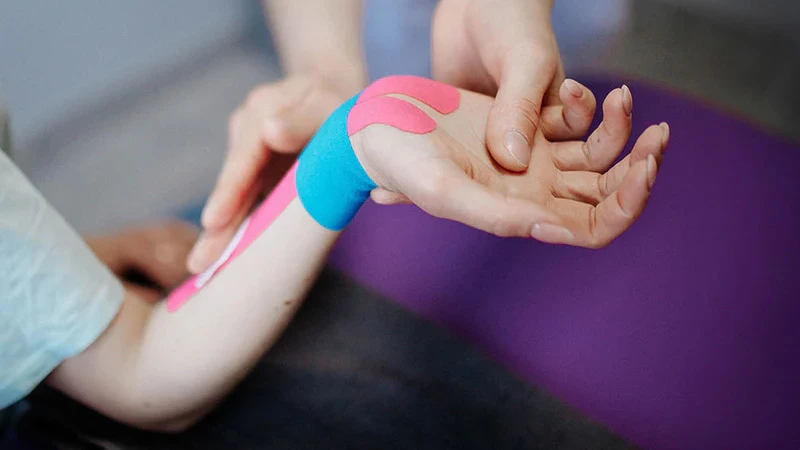
What are the benefits of kinesiology tape?
Traditionally, athletes with muscular injury would use tape or strapping to restrict motion and prevent further strain to the affected region. Kinesiology tape essentially takes the opposite approach, attempting to create space for full movement, stabilising the injured area without restricting range-of-motion. K-tape manufacturers typically claim three key benefits:
Decompression & improved blood flow
When a region of the body is injured through over-use or impact, we experience a build-up of lymphatic fluid, causing inflammation, swelling, and often pain. Manufacturers claim that K-tape lifts the skin to decompress the affected tissues, allowing for greater blood flow and removal of this additional lymphatic fluid. This not only could reduce pain, but also promote accelerated healing and return function of the affected area.
Muscle & joint stability
The elastic yet supportive properties of K-tape are claimed to help muscle alignment and assist in efficient contraction throughout a joint’s full range of motion. The high recoil factor may also help protect muscles from cramping and over-extension, potentially delaying fatigue and distributing stress more evenly throughout the fascia and ligaments. If true, this would definitely help an athlete maintain joint stability, especially under fatigue when the joint is most vulnerable.
Proprioception & pain reduction
Our bodies are covered in sensory receptors that detect touch and pain, while also contributing to proprioception or our awareness of body position and movement. K-tape is claimed to create a novel sensory input that increases this sense of proprioception, or awareness of individual muscles. It may also change the way our brains interpret any existing pain signals, potentially reducing pain from the affected area.


Is there any scientific evidence supporting the benefits of K-tape?
Well, to some extent at least, the jury is still out. A number of studies have investigated the claimed benefits of kinesiology tape, with some finding positive effects. There is, however, still a substantial lack of high-quality evidence to back up its use.
Typically, research has investigated four outcome measures when exploring the effects of K-tape: pain relief, posture + range of motion, performance enhancement + muscle function, and proprioception.
Pain relief is possibly the most certain area in terms of benefits in research. Studies investigating both spinal pain [2] and shoulder pain [3] have found short-term (around 24-hour) relief. A meta-analysis of a larger body of research [4] concludes that, although taping is not justified as a primary analgesic technique, it shows potential as a short-term supplementary method to reduce pain. Unsurprisingly, the exact mechanism by which this pain relief is achieved is still unknown, although theories surrounding both the additional sensory input and a purely mechanical decrease in loading are still on the table.
In terms of posture and range-of-motion, again there are some encouraging signs without any overwhelming evidence. Studies investigating the cervical spine [2] and the knee [5] have both found short-term improvements in range of motion and pain. Improvements have also been found in terms of forward shoulder posture [6] amongst seated workers, and hamstring extensibility [7], noting that K-tape showed significant improvements in active knee extension immediately post-intervention.
Studies investigating potential performance enhancement have seen increased strength and muscle activation in hand grip [8], cycling [9], and quadriceps peak torque [10] activities, as well as improved postural control [11] on unstable surfaces around the ankle. Similarly, improvements in knee extensor strength [12] have also been found when wearing K-tape after a fatiguing protocol, with authors suggesting that stimulation of the skin around the knee could counter quadriceps weakness due to increased motor neurone activity.
Finally, several positive outcomes related to proprioception have been observed when wearing K-tape. Improvements in joint repositioning accuracy at the knee [13] and shoulder [14], decreased time to detect movement at the knee [15] and lumbar spine [16], and enhanced muscle recruitment [9] are all indicative of greater efficiency in the neuromuscular system, ultimately leading to more controlled and precise movement.
So what's the conclusion - should I use kinesiology tape or not?
The fact is that K-tape is almost certainly one of those products where the truth is somewhere in the middle. There is definitely hype, and probably something positive in the science, although hard evidence is limited at this stage.
K-tape is at the very least a relatively inexpensive, easy, and low risk way to create new sensory input during exercise. For me, although much of the evidence is anecdotal, given the number of high-performance athletes we now see using K-tape there simply has to be something in it. At the very least it makes people feel good, look awesome, and build confidence in their bodies. In my opinion, so long as the claimed benefits aren’t over-the-top, that is a pretty good place to start.
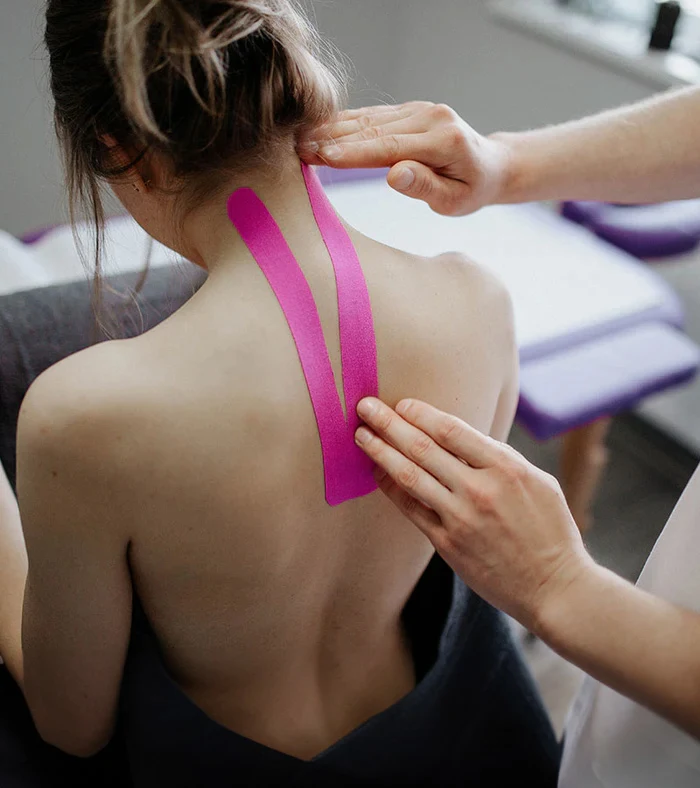
What's next in the world of kinesiology tape and support?
K-taping taping techniques and applications continue to grow. You can now easily find specific courses available for speech therapists, midwives, paediatrics, lymphologists, and even equine kinesiology. But although there is research and product development going on beyond that, K-tape technology itself has been relatively unchanged for the past 10 years.
We are starting to see a demand from athletes for multi-functional products that can either assist in injury prevention, support, or performance enhancement, as well as performing their core task. Think of the rise in wearable tech as the best recent example, being able to track activity from a watch, or measure run characteristics from technology integrated into footwear.
Companies including Over+Above are beginning to look at the apparel space, and how to innovate multi-functional garments that go beyond the basic requirements of covering your skin. The combination of performance sports apparel and the supportive aspects of athletic or kinesiology taping is certainly a potential growth area, and one that we think could redefine the way people think of sportswear.
What is taped clothing, and how is it different to traditional sportswear?
In short, taped clothing combines existing garments, typically compression wear, with integrated structures that in some way mimic athletic taping.
The integration of support structures into garments really began with postural supports. These range from hardcore braces that guide the wearer into a more neutral position, to more subtle garments promoting a straighter back during sitting and standing. These can be good in certain applications, but can be uncomfortable, and are somewhat limited in their specific use for postural support.
More recently a few companies have started integrating flexible structures into garments targeted specifically at sportspeople. Athletes may expect to feel targeted compression, improved muscle & joint support, fatigue reduction, and enhanced recovery. By combining the already extremely popular benefits of compression garments, with some element of targeted support, companies are now able to offer the multi-functional garments that athletes demand.
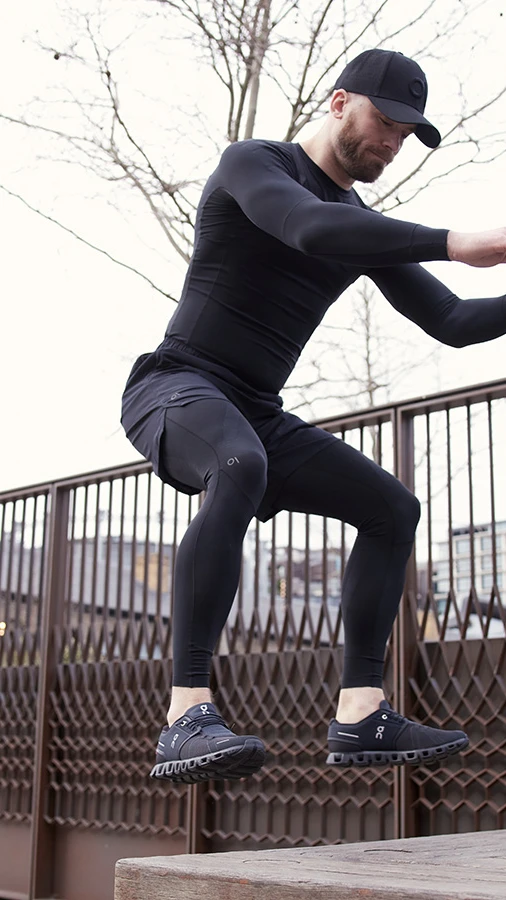
At Over+Above we’re leading the way in exploring a new approach to sports apparel, going beyond the benefits of K-tape to create something totally novel. We’ve been through years of research & development to perfect our concept, patent our technology, develop, and produce the garments you can now enjoy.
Over+Above garments are anatomically engineered with our patented ProPrio system. Combining performance grade muscle-mapped compression with an integrated flexible skeleton, sensory nodes, and grippy silicone cuffs to create garments that truly work with your body during exercise. Helping you connect with every movement, support key muscles and joints, and train with optimal efficiency.
All we can recommend is to give ProPrio a go, we’re pretty sure you’ll feel the difference as soon as you put it on.
References
[1] Kinesio tape market – global industry trends and forecast to 2028. (n.d.). www.databridgemarketresearch.com. Retrieved April 24, 2023.
[2] GonzáLez-Iglesias, J, Fernández-de-las-Peñas, C, et al. (2009). Short-term effects of cervical kinesio taping on pain and cervical range of motion in patients with acute whiplash injury: a randomized clinical trial. Journal of Orthopaedic & Sports Physical Therapy, 39(7), 515–521.
[3] Thelen, M, Dauber, J, & Stoneman, P. (2008). The clinical efficacy of kinesio tape for shoulder pain: a randomized, double-blinded, clinical trial. Journal of Orthopaedic & Sports Physical Therapy, 38(7), 389–395.
[4] Artioli, D, & Bertolini, G. (2014). Kinesio taping: application and results on pain: systematic review. Fisioterapia E Pesquisa, 21(1), 94–99.
[5] Lee, K, Yi, C, & Lee, S. (2016). The effects of kinesiology taping therapy on degenerative knee arthritis patients’ pain, function, and joint range of motion. Journal of Physical Therapy Science, 28(1), 63–66.
[6] Han, J, Lee, J, & Yoon, C. (2014). The mechanical effect of kinesiology tape on rounded shoulder posture in seated male workers: a single-blinded randomized controlled pilot study. Physiotherapy Theory and Practice, 31(2), 120–125.
[7] Farquharson, C., & Greig, M. (2015). Temporal efficacy of kinesiology tape vs traditional stretching methods on hamstring extensibility. International Journal of Sports Physical Therapy, 10(1), 45–51.
[8] Lemos, T, Pereira, K, et al. (2015). The effect of Kinesio taping on handgrip strength. Journal of Physical Therapy Science, 27(3), 567–570.
[9] Hébert-Losier, K, Yin, N, et al. (2019). Physiological, kinematic, and electromyographic responses to kinesiology-type patella tape in elite cyclists. Journal of Electromyography and Kinesiology, 44, 36–45.
[10] Choi, I, & Lee, J. (2018). Effect of kinesiology tape application direction on quadriceps strength. Medicine, 97(24), e11038.
[11] Lee, S, & Lee, J. (2017). The immediate effects of ankle balance taping with kinesiology tape on ankle active range of motion and performance in the Balance Error Scoring System. Physical Therapy in Sport, 25, 99–105.
[12] Choi, I, & Lee, J. (2018). Effect of kinesiology tape application direction on quadriceps strength. Medicine, 97(24), e11038.
[13] Macefield, V, Norcliffe-Kaufmann, L, et al. (2016). Increasing cutaneous afferent feedback improves proprioceptive accuracy at the knee in patients with sensory ataxia. Journal of Neurophysiology, 115(2), 711–716.
[14] Burfeind, S. and Chimera, N. (2015). Randomized control trial investigating the effects of kinesiology tape on shoulder proprioception. Journal of Sport Rehabilitation, 24(4), 405–412.
[15] Torres, R, Trindade, R, & Gonçalves, R. (2016). The effect of kinesiology tape on knee proprioception in healthy subjects. Journal of Bodywork and Movement Therapies, 20(4), 857–862.
[16] Banerjee, G, Briggs, M, & Johnson, M. (2019). The effects of kinesiology taping on experimentally-induced thermal and mechanical pain in otherwise pain-free healthy humans: a randomised controlled repeated-measures laboratory study. PLOS ONE, 14(12), e0226109.
New arrivals
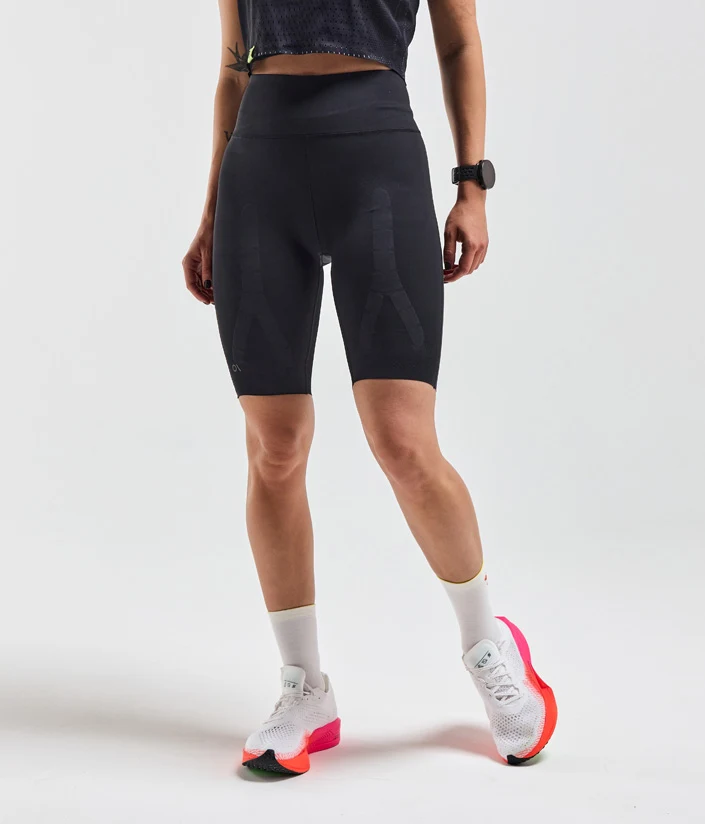
Womens
ProPrio Performance Half Tights - High Rise
(1)
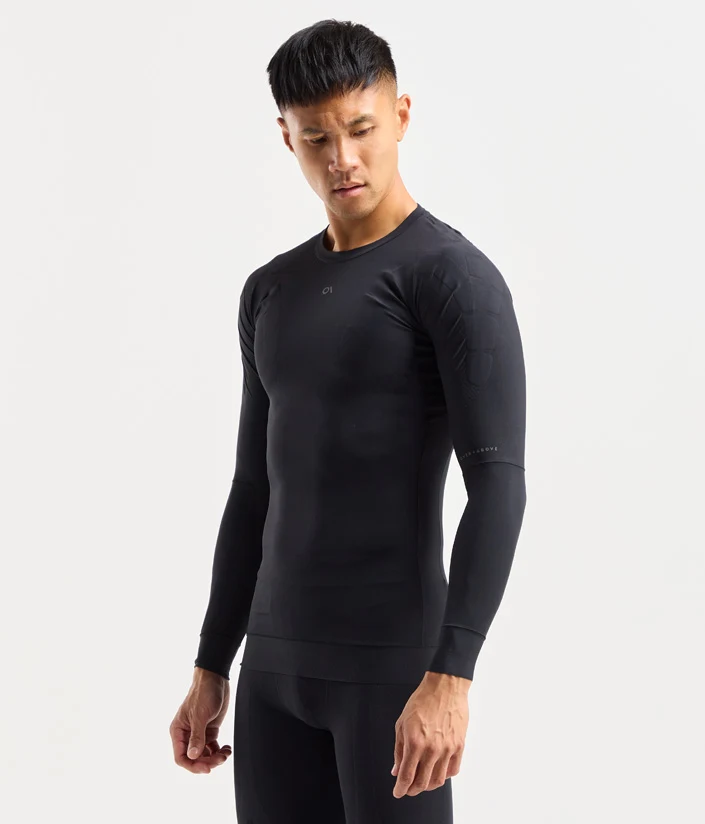
Mens
ProPrio Performance Long Sleeve Top
(0)
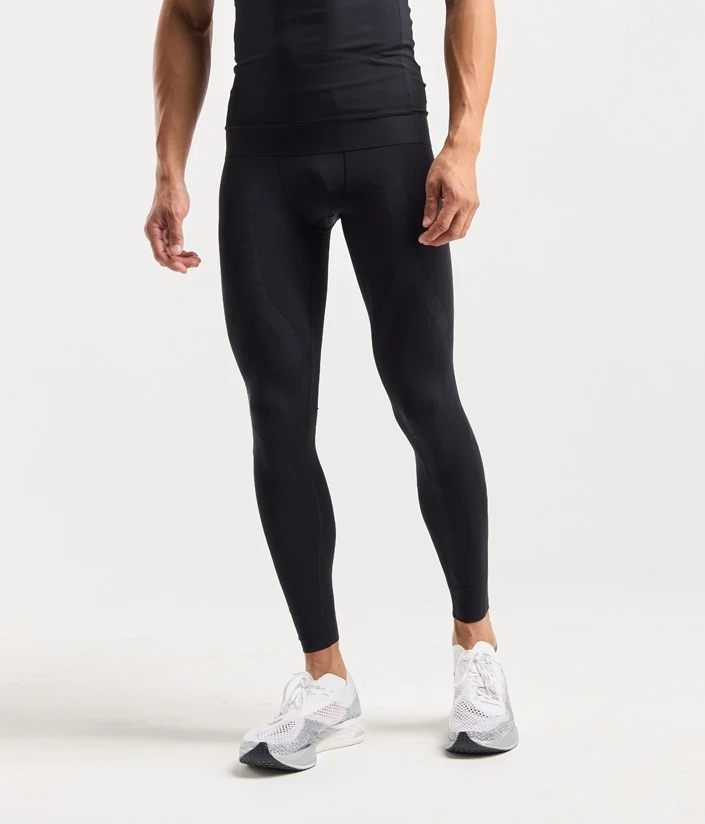
Mens
ProPrio Performance Full Tights
(2)
More articles...
 Compression Tights for Runners: Do They Improve Performance?Science
Compression Tights for Runners: Do They Improve Performance?ScienceCompression Tights for Runners: Do They Improve Performance?
29.10.2025
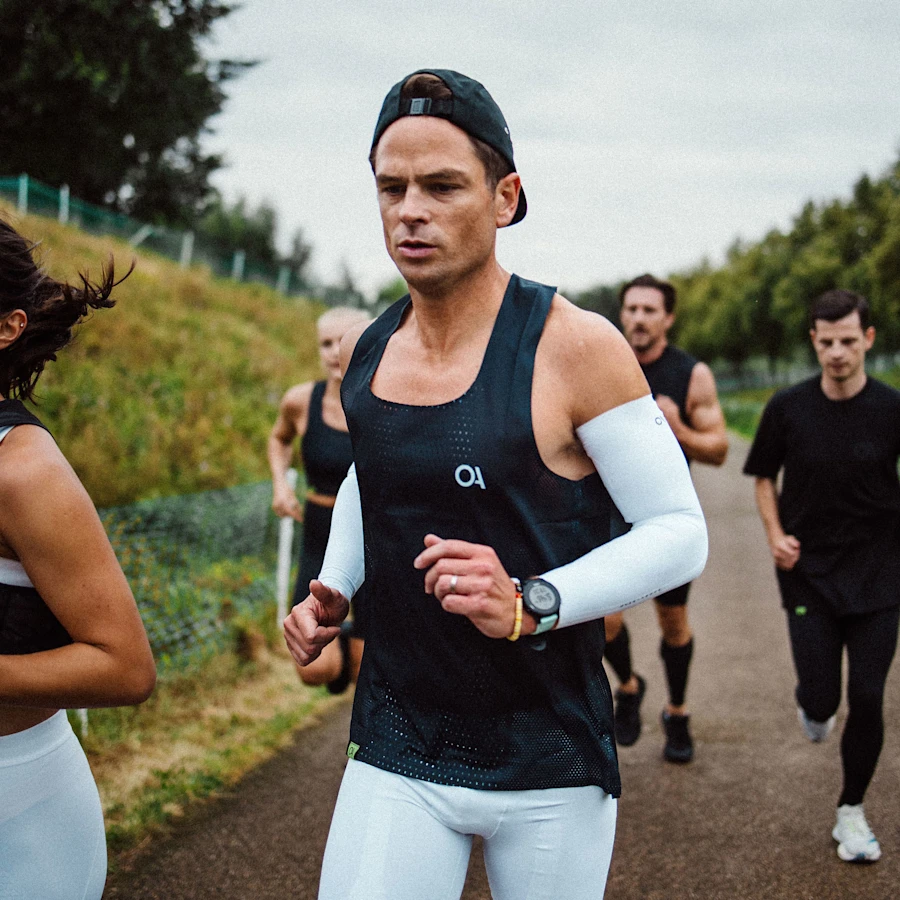 Best Compression Gear for Marathon Runners in 2025Science
Best Compression Gear for Marathon Runners in 2025ScienceBest Compression Gear for Marathon Runners in 2025
29.10.2025
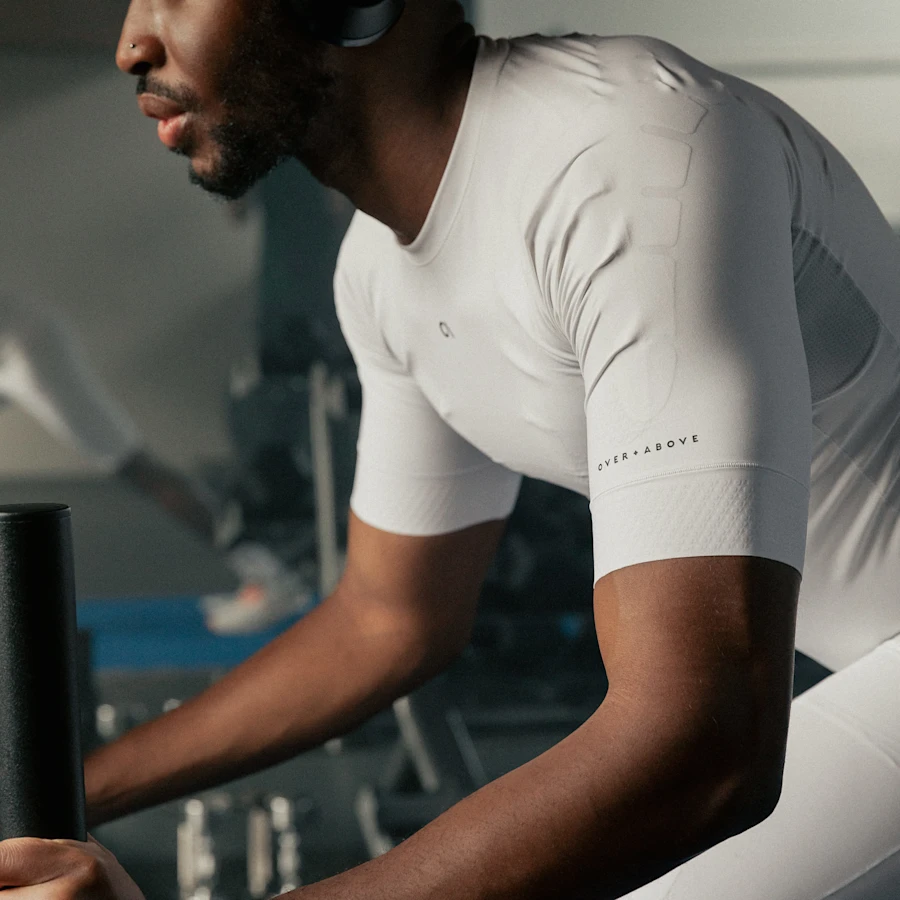 Why Compression Tops Are a Game-Changer for Weightlifting & HIITScience
Why Compression Tops Are a Game-Changer for Weightlifting & HIITScienceWhy Compression Tops Are a Game-Changer for Weightlifting & HIIT
24.10.2025


